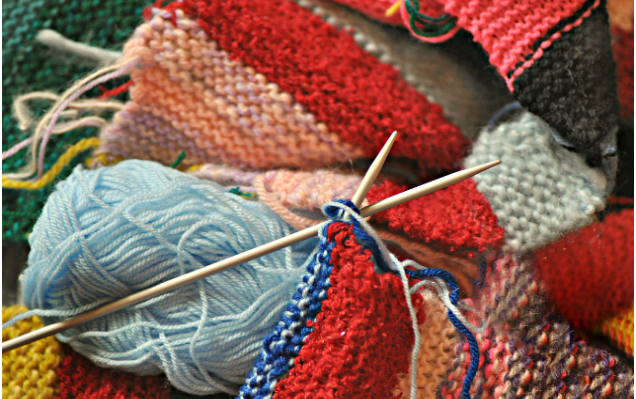Knitting is a beloved craft that requires the right tools to make beautiful, comfortable, and long-lasting pieces. While choosing the right yarn is crucial, selecting the right knitting needles is just as important.
Knitting needles come in a variety of materials, sizes, and shapes, and each one can have an impact on your knitting experience. In this guide, we’ll explore the different factors to consider when selecting knitting needles beyond just material.
Before diving into the factors to consider when selecting knitting needles, it’s important to note that the quality of your needles can greatly affect your knitting experience. Cheap or poorly made needles can cause frustration, uneven stitches, and even hand fatigue. It’s worth investing in a set of quality knitting needles that will last you for years to come.
Additionally, it’s important to consider the type of yarn you’ll be using in conjunction with your needles. Certain yarns may require specific types of needles to ensure a smooth and even knitting experience.
By taking the time to select the right needles for your project, you’ll set yourself up for success and a more enjoyable knitting journey.
Size and Gauge
One of the most important factors to consider when selecting knitting needles is the size and gauge. Knitting needles come in a range of sizes, from tiny 1mm needles for fine lacework to large 25mm needles for chunky knits. Choosing the right size needles for your yarn is essential, as this will impact the finished product’s size and texture.
The gauge, or the number of stitches per inch, also plays a crucial role in selecting the right knitting needles. Different yarns have different recommended gauges, and selecting the right needles can help you achieve the desired gauge and create a consistent and professional-looking piece.
Tip Shape
Knitting needles come in different tip shapes, each with its own benefits and drawbacks. The most common tip shapes are pointed, rounded, and blunt.
Pointed tips are excellent for intricate knitting and lacework, as they can easily slide into tight spaces and create small stitches. Rounded tips are better for simpler knitting and beginner knitters, as they are less likely to split the yarn and create uneven stitches. Blunt tips are excellent for chunky yarns and create a relaxed, casual look.
Material
While the material of knitting needles may seem like the most important factor, it’s not the only one to consider. Different materials can impact your needles’ weight, feel, and durability.
Bamboo needles are lightweight and easy to handle, making them popular for beginners. They also have a warm feel and are less likely to slip out of your hands. However, bamboo needles can be prone to breaking and warping over time.
Metal needles are durable and long-lasting, making them a popular choice for experienced knitters who knit frequently. They can also be slippery, which can make them challenging to handle for some knitters.
Plastic needles are affordable and easy to handle, but they can be prone to breaking and warping over time.
Wooden needles are lightweight and warm to the touch, making them an excellent choice for knitters who prefer natural materials. They are also durable and long-lasting, making them an excellent investment for experienced knitters.
Cable Length
Another factor to consider when selecting knitting needles is the cable length. Cable length is crucial when knitting in a round or when using a long circular needle. Longer cables are excellent for knitting larger projects or for knitting in the round, while shorter cables are better for smaller projects and more straightforward knitting.
Ease of Use
Finally, it’s essential to consider the ease of use when selecting knitting needles. Some needles may be more challenging to handle than others, depending on the knitter’s experience and preferences. Some needles may be too slippery or too sticky, while others may be too heavy or too light.
It’s essential to consider how the needles feel in your hands and how comfortable you are using them before making a purchase. Some knitters prefer needles with a larger grip or a more ergonomic design, while others prefer straight and classic needles.
It’s also important to consider the knitting tools and accessories that come with the needles, such as stitch markers, row counters, and needle gauges. These can make your knitting experience more efficient and organized, allowing you to focus on your project and enjoy the process.
In conclusion
Selecting the right knitting needles goes beyond just the material. It’s essential to consider factors like size and gauge, tip shape, material, cable length, and ease of use to ensure a successful and enjoyable knitting experience.
Experimenting with different types of knitting needles can also help you discover new techniques and expand your knitting skills. With the right knitting needles and the right mindset, you can create beautiful, comfortable, and long-lasting pieces that you’ll be proud to wear or give as gifts.
And don’t forget to take care of your knitting needles by storing them properly and cleaning them regularly, especially if they’re made of natural materials like wood or bamboo.
Another important factor to consider when selecting knitting needles is the type of project you’ll be working on. Some projects may require specific types of needles or sizes, depending on the pattern and yarn used.
For example, knitting socks or gloves may require smaller needles and more pointed tips, while knitting a chunky blanket may require larger needles and blunt tips. It’s important to read the pattern carefully and choose the right needles to achieve the desired results.
If you’re new to knitting, it can be helpful to start with a basic set of needles that includes different sizes and materials. This will allow you to experiment and find what works best for you and your knitting style. As you gain more experience and confidence, you can invest in more specialized needles or sets that cater to your specific needs and preferences.
Finally, don’t be afraid to ask for advice or recommendations from other knitters or from your local yarn shop. Knitting is a community-based hobby, and many knitters are happy to share their knowledge and expertise with others.
Authors bio
Lucas Green is a young digital marketing enthusiast from Phoenix, Arizona, US. Passionate about graphic design, social networking, content writing, and business in general. In his spare time, he writes extensively about graphic design, traveling, and business for SEO Magazine- SEO Turnover.




